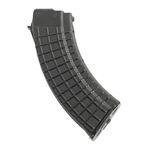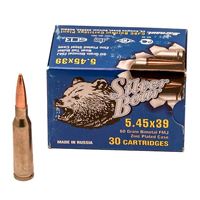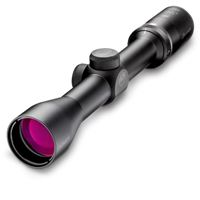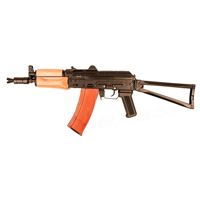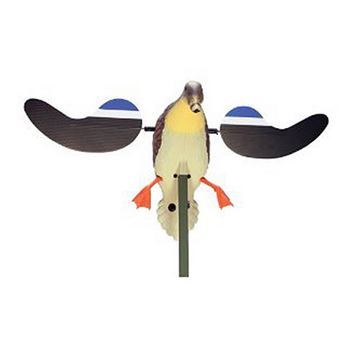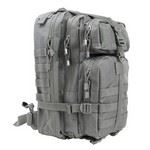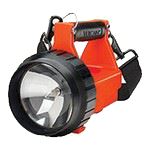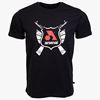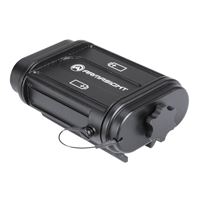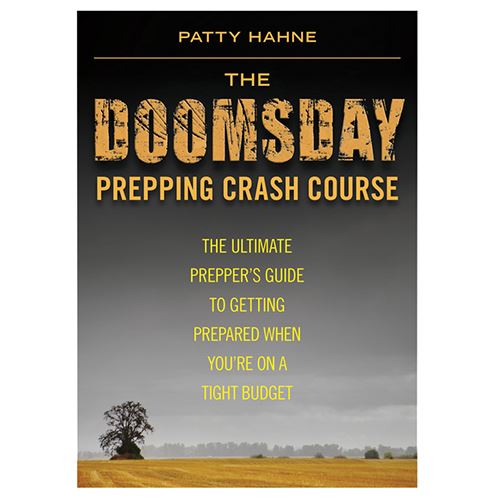Some handguns give you a 1,200-psi adrenaline flow just handling them. Others are as exciting as a dance on broken ground. The Colt Single Action Army is among the former. The Colt is an icon in the truest sense, and iconic handguns, and the use they have been put to in times of war and trouble, are immensely interesting.
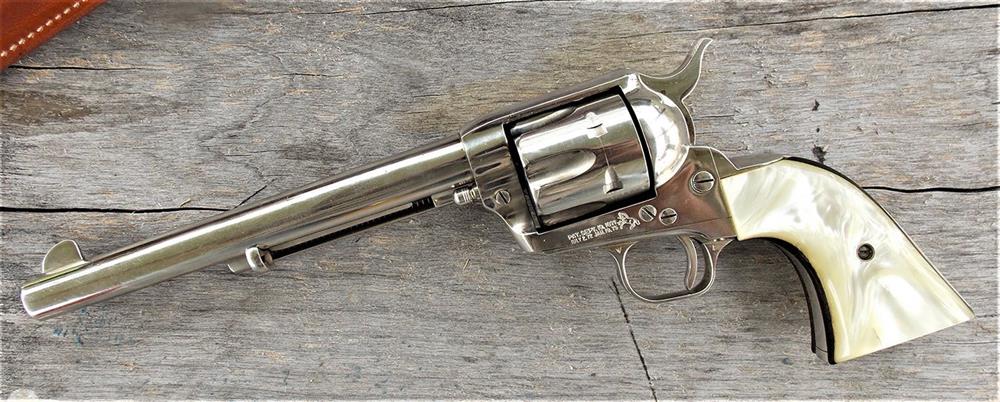
Despite being introduced in 1873, the Colt SAA (sometimes called Frontier Six Shooter or Peacemaker) remains in production and is still a useful firearm. I often carry the Colt Single Action Army in the field, as a trail gun, when hiking, and sometimes just because it feels right. My philosophy of a hard hit delivered with accuracy, in preference to a flurry of small caliber shots, seems a good fit for my lifestyle.
The Colt isn’t at the top of the list for personal defense anymore, but it isn’t at the bottom either. For protection against dangerous animals, including feral dogs and the big cats, the Colt seems just right. The Colt was the first choice of experienced gunners many years ago, despite good quality double action revolvers being widely available.
Lawrence of Arabia, Frank Hamer, Tom Threepersons, Douglas McArthur, George S. Patton and others relied on the Colt SAA for everyday use. It is a practical, hard-hitting handgun and these men were on the point of danger. (Hamer and Lawrence each referred to the Colt SAA as their Lucky Gun or Old Lucky, and each also used the 1911 pistol.)
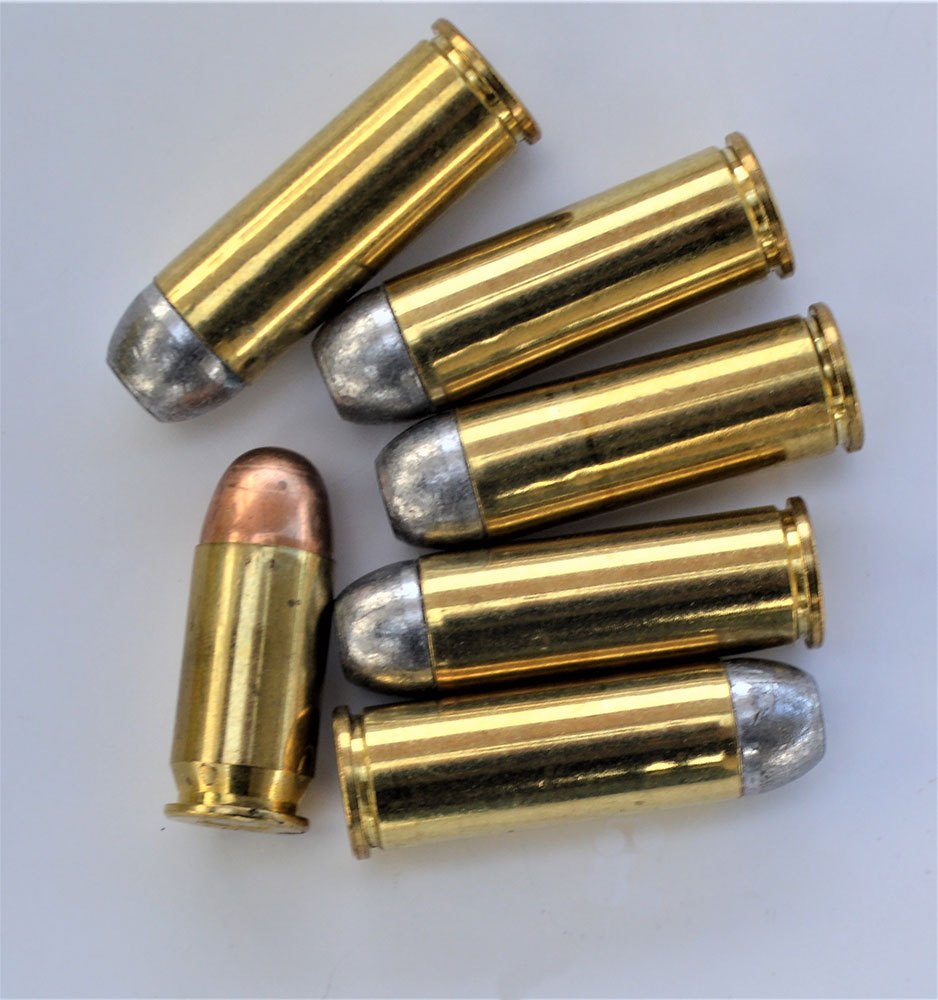
In the early 1870s, Colt Firearms was given the task of creating a new Army revolver. The goal was a handgun and cartridge capable of taking an Indian war pony out of action at 100 yards. (More horses than men were killed in practically every battle in the west.) The result was the solid-frame Single Action Army. The .45 Colt used a variety of loads ranging from 230 to 260 grains, at 750 to 900 fps, in both copper and brass cartridge cases. The cartridge lived up to its promise. While there were other cartridges chambered in the Colt—notably the .44-40 WCF—the .45 Colt is my favorite. It resounds with authority today.
The original Army revolver featured a 7 ½-inch barrel. The later Artillery Model featured a 5 ½-inch barrel, and finally a popular 4 ¾-inch barrel or Gunfighter’s Model was introduced. The Single Action Army requires the hammer be put on half cock to load. Open the loading gate. Load one cartridge, skip a cylinder, load four, and cock the hammer and lower it on an empty chamber. The SAA revolver, then and now, is only safe to carry with five beans under the wheel as the firing pin would rest on the primer of a chambered cartridge otherwise, an unsafe practice.
To unload, open the loading gate and kick each cartridge out individually with the ejector button.
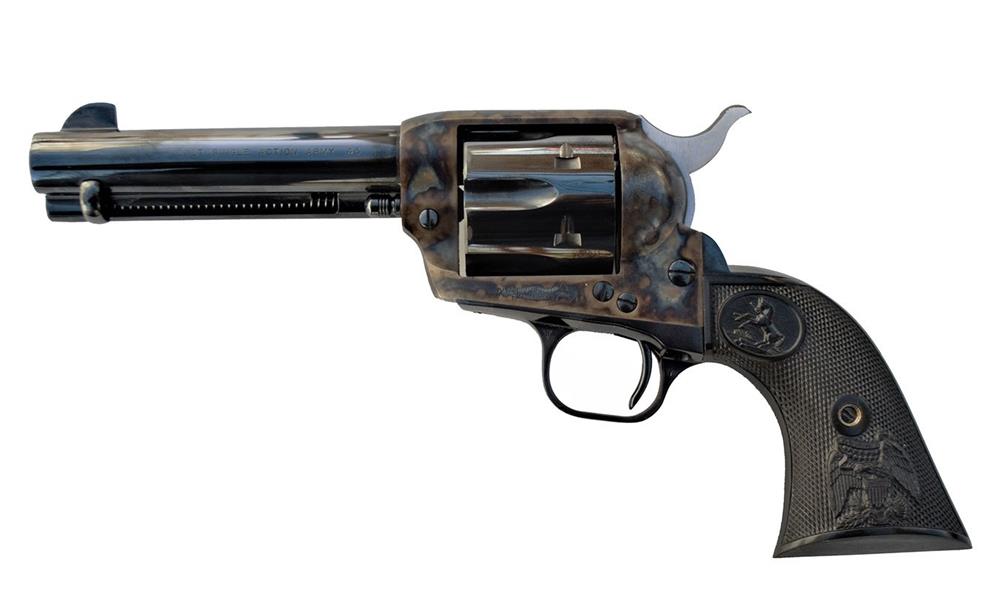
The first guns were manufactured with iron frames that were case hardened to strength. I still prefer the case-hardened look with modern, high-quality steel revolvers. There are incremental improvements in the type and many different chamberings.
The SAA earned a reputation as a durable and hard-hitting handgun. The balance of the revolver is excellent. It is among the fastest pointing and hitting handguns I have used. The 1911 fits my hand well and it is superior in rapid fire.
The double action revolver requires a different grip style to stabilize the handgun as the forefinger works the trigger. However, nothing points like a finger like the SAA. Even today, few handguns are as fast and sure to an accurate first shot at moderate range. The wound potential of the lumbering old slug is unsurpassed in standard calibers although equaled by strong loads in the .45 Auto Rim.
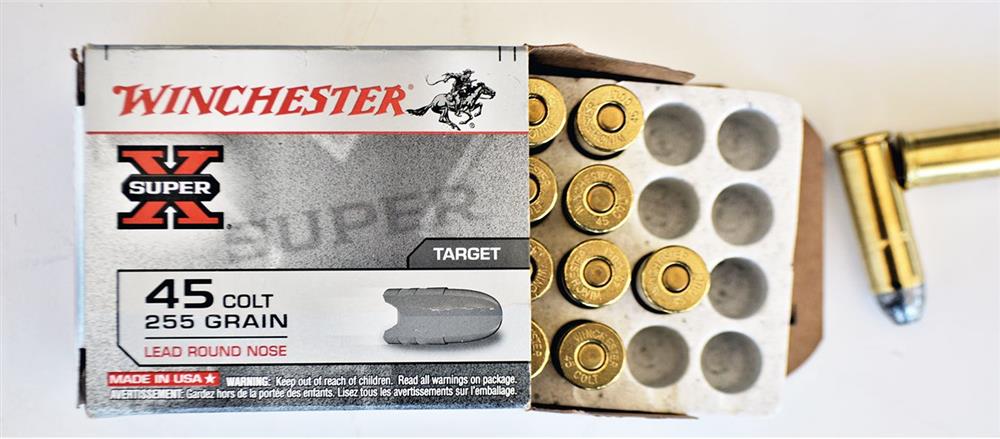
My modern SAA is the 4 ¾-inch version with case-hardened frame. The revolver is plenty accurate for most uses. I have used quite a few loads in this Colt and still enjoy working up handloads and testing factory loads. Winchester still produces the original 255-grain conical bullet.
The Super X load is faster than the modern cowboy action loads and breaks at just over 800 fps in the 4 ¾-inch barrel SAA. This load exhibits excellent penetration. The bullet will tumble in some media creating an extensive wound the length of its travel. I have the greatest respect for this load as a personal defense load and for defense against animals into the big cat class.
I have also tested the Winchester PDX hollow point. This load operates at modest pressure but jolts a well-designed 225-grain JHP at 800 fps. Expansion is good. This loading would make for an excellent home defense load. There are combinations I load myself for occasional use that are even stronger, including a 255-grain SWC at 1,000 fps, but I do not need these for most uses. With any of these loads, the Colt will group five shots into 2-2.5 inches at 20 yards.
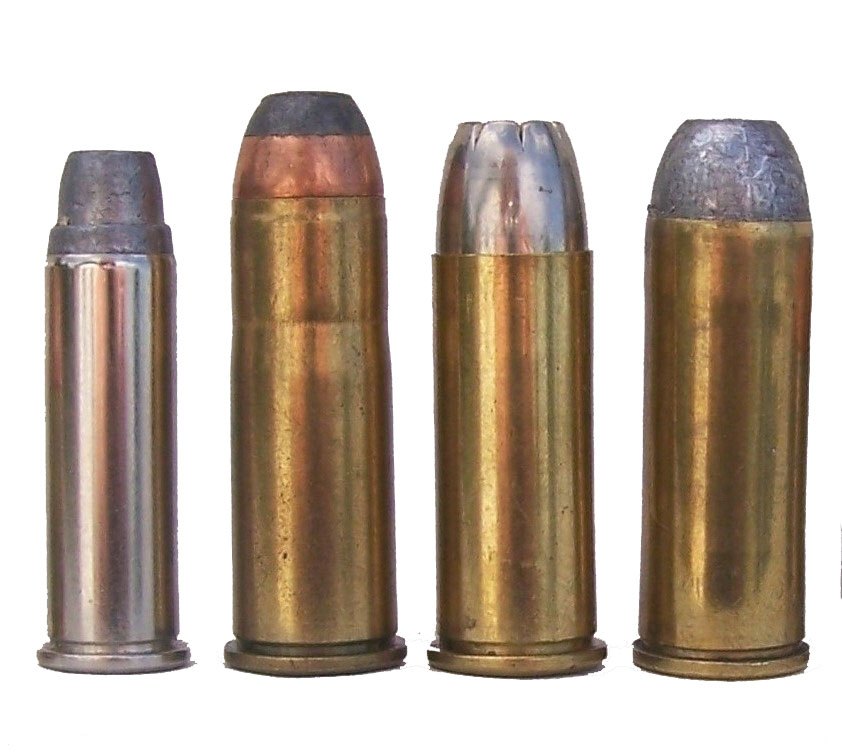
A great advantage of the SAA is its balance on the hip. The revolver sets right, with the proper balance of barrel, cylinder, and butt to offer a forward tilt on the draw. While I am not averse to tucking the revolver in my belt, with the loading gate open in the appendix position, you really need a good holster. Among the finest possible holsters to be had is the DM Bullard shoulder holster. This is a relatively fresh design with excellent utility.
The holster’s load bearing harness features a steel reinforcement for rigidity. The holster itself may be detached for belt use if needed. The rig shows excellent fit and finish—including creased straps and excellent adjustment. During the winter months, there is no handier type of carry.
I also use a concealed carry holster with a severe tilt that offers practically as much concealment as an inside the waistband holster. Mine is of carefully crafted exotic leather. Also from DM Bullard, this holster is a sturdy companion that keeps the handgun secure but ready for a rapid presentation.
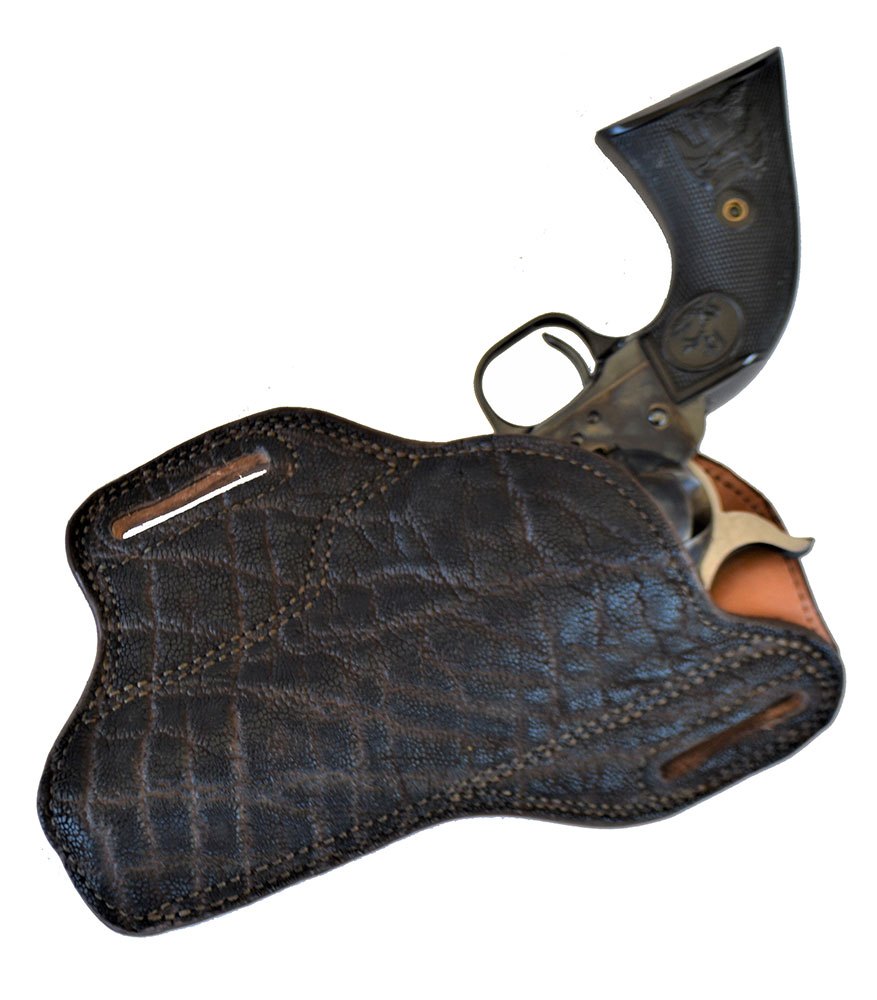
The Colt has the famous plow-handled grip and a decent trigger. A tip on firing the beast… don’t take the time to carefully steady the gun and fire slow fire. Instead, you need to use it as intended. Draw, cock the hammer as it is brought on target, and press the trigger smoothly but quickly.
Specifications
Action Type: Single Action
Caliber: .45 Colt
Capacity: 6 rounds
Barrel Length: 4 ¾ inches
Grips: Hard Rubber
Sights: Fixed, half-moon front, groove rear
Weight: 38 oz.
Finish: Frame is case hardened, barrel, grip frame and cylinder Colt Blue
Price: $2,200 (Average retail)
Colt revolvers are among the most famous of handguns. They are historically important and offer practical utility today. If a sense of history and emotional attachment mean anything to you, these are the handguns to have. Don’t lock them in the safe. Fire them often. Carry them. They are valuable, but in my opinion, they are more valuable to a shooter than a collector.


